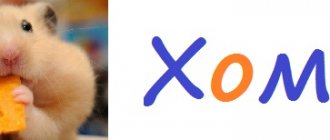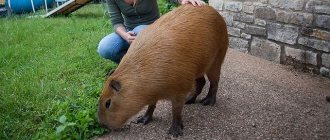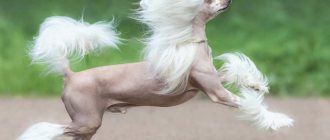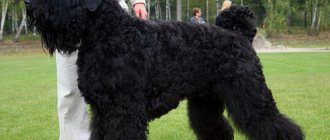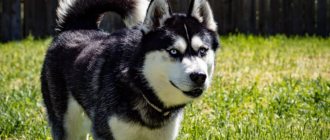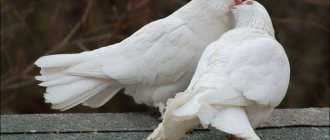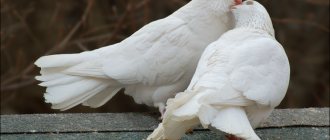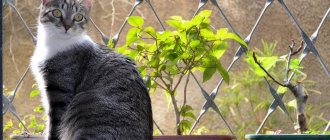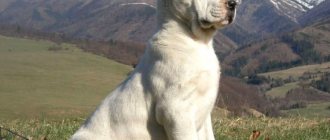Many believe that chinchilla breeds are fiction, and that the animals can be exclusively gray, the way they are most often seen in pet store windows and in photos on the Internet. However, this opinion is wrong. Breeders have been working for decades to ensure that the breeds and shades of these funny rodents only increase.
Below we will introduce you to the varieties of chinchilla colors and their breeds offered in nurseries.
Chinchilla breeds
These domesticated rodents are divided into two varieties, which have their own characteristics in the structure of the body and the length of the tail:
- Large short-tailed Peruvian chinchillas came to us from Bolivia and Argentina. These places are their homeland, and there they live in the wild, but only in protected areas, since local residents exterminate them for their valuable fur. In addition to nature reserves, they are also grown on specialized farms. Short-tailed chinchillas not only have dense fluffy fur, but also a fairly strong body. Standing on its hind legs, the animal reaches a height of up to 40 centimeters and weighs about 800 grams. The tail of large rodents is short, covered with stiff, short hair.
- Coast long-tailed chinchillas are common in Chile. They have a small body and a long tail covered with dense fur. Their weight does not exceed 700 grams.
Both chinchilla breeds are light gray in color. However, thanks to the efforts of breeders, long-tailed chinchilla rodents can now boast a huge variety of shades of their magnificent skin.
Angora chinchilla
One of the subspecies of long-tailed animals is the Angora royal chinchilla. It was not bred artificially. The rodent appeared thanks to the efforts of nature itself.
The animal was first noticed in the sixties of the last century. But he was included in the breed directory only in 2001. It is extremely difficult to breed this subspecies in artificial conditions, since the children from the male and female of this breed of chinchillas do not always turn out to have long hair; they often have short hair. It is for this reason that breeding Angora dogs requires the breeder not only to be professional, but also to carefully select pairs.
Angoras have silky long fur and a luxurious tail. In addition, they have long hair on their heads and paws. This breed of chinchilla has a flattened muzzle, which is why people call them Persian. The animals themselves are black, blue, diamond and purple.
“Angora chinchillas are the most expensive of all. The price of one individual is over 50 thousand rubles. The domestic animal has such valuable fur that the high cost of rodents has remained so for decades.”
Dwarf chinchilla
Mini chinchillas are also a natural genetic mutation. These animals have a small body, short legs and a bushy tail. The weight of rodents does not exceed 300 grams.
Dwarf domestic chinchillas give birth to the same cubs as their ordinary counterparts, so childbirth is difficult to endure. In most cases, babies do not survive. The animal must be under the supervision of a veterinarian throughout pregnancy. The shades of these cute animals can be different.
Pros and cons of content
Taming a chinchilla is not an easy path
Before you get a chinchilla, you need to understand that this is a wild animal that is difficult to tame . But just watching him is a lot of fun. These animals are distinguished by their dexterity of movement and good jumping ability. They are quite shy, which requires gradual accustoming of the animal to the presence of the owner.
It is not recommended to let your chinchilla out for a walk if the place for it has not been prepared in advance. She can easily climb objects located at the level of the window sill and above, and slip into any crack.
These charming animals can demonstrate different character traits: obedience, cunning, perseverance. On average, chinchillas live up to 20 years in natural conditions.
Pros of content:
- absence of odor in animal urine and excrement;
- the ability to tame an animal and teach simple tricks;
- Chinchillas have no sweat glands, due to which the fur coat is always clean and odorless;
- rapid reproduction, which makes it possible to make a profit from the sale of offspring;
- unpretentiousness in food and maintenance;
- the pleasure of communicating with the animal and observing it.
Minuses:
- animals are nocturnal, and at appropriate times begin to become active, which may interfere with the owners’ rest;
- like any rodent, they taste all the objects they come across;
- the need to maintain a stable temperature in the room with the enclosure, since changes can cause the animal to get sick;
- do not like to be held by a person;
- They are curious and strive to explore the entire territory when walking.
Varieties of colors
Since chinchillas have a lot of enemies in the wild, for their own safety, rodents have a light gray color, inconspicuous among rocky terrain.
Gray is the standard color for these cute animals, but artificially bred chinchilla breeds come in a wide variety of shades. Among them there are black, beige, white and even blue tones of chinchilla fur. Therefore, it is now extremely difficult to imagine that chinchillas originally had only gray colors.
All shades of chinchilla fur can be grouped as follows:
- gray or agouti: two shades that are standard;
- white, having different saturation and an admixture of beige and pinkish;
- brown or pastel, available in a full range of colors up to dark chocolate;
- black with varying degrees of saturation;
- purple, pink and sapphire.
In addition, it should be taken into account that fur colors differ not only in color, but also in:
- recessive. When a chinchilla is only a carrier of the gene responsible for the shade of its coat.
- dominant. When the color is already there and visible from birth.
When breeding rodents, it is extremely important to know what recessive color the male chinchilla and the female selected for mating have.
Character traits
Chinchilla cats can be called noble aristocrats. They have a soft, easygoing character, become attached to their owner and get along with children - they tolerate it even if they pull their tails. But if possible, they try to retreat from the nursery as quickly as possible. Left alone, the animal will prefer special toys rather than the owner's furniture.
As already mentioned, cats are human-oriented, and therefore require increased attention to their person. Their favorite place is on their owner's lap. Loneliness is contraindicated for representatives of this breed - they experience stress, feel sad, and may even get sick. At the same time, chinchillas are self-sufficient and do not like it when their personal space is invaded. If the cat does not want to be touched or stroked at the moment, she will make this clear.
As kittens, animals can spend hours playing, running after toys or rustling candy wrappers. However, as cats grow older, they play less and less, as if to demonstrate that they are representatives of the royal breed. An adult cat will prefer bliss in some warm and soft place to games.
At the same time, it is still important to play with your pet, since a sedentary lifestyle is a direct path to obesity and disease.
Representatives of the breed are distinguished by their delicate character and intelligence. Cats are clean and easy to train. The owners also note that chinchillas are big fans of “talking.” They respond to affection with numerous purrs; they can meow to their owner when they are bored or something is bothering them. The usual “meow” and “mur” have many intonations in their “lexicon”.
Rodents with gray color
Gray standard
Gray chinchillas are found both in the wild and in captivity.
Breeders divide them according to the color itself and its depth. Gray chinchillas are:
- light gray;
- medium gray;
- dark;
- moderately dark;
- extra dark.
Gray coloring is standard for chinchillas living in the wild and in domestic environments. The back of rodents is dark, the sides are light, and the belly is white. The wool has two shades. It is gray-blue at the base and black at the ends of the hairs.
Individuals of gray shades, unlike other rodents, are distinguished by very good health. In addition, the age of chinchillas of this shade to bear their first offspring is much lower than that of other subspecies. They can be crossed with absolutely any variety. Rodents have fur that is delicate and soft to the touch.
Light gray
Light gray fur with a silver tint looks very impressive. These chinchillas have a light chest, belly and limbs.
Medium gray
The most common color. The body of the animals has a uniform gray tint, the fur on the stomach, limbs and chest is light.
Dark
The fur has a gray tint with a bluish tint. The belly and chest of rodents are light, standing out well against the background of the rest of the fur.
Moderately dark
The fur of rodents has a dark gray tint, turning into ashy on the face, limbs and sides. Chinchillas have a bluish-white belly.
Extra dark
Many breeders prefer charcoal gray chinchillas with light sides and chest. The belly of this subspecies of rodents is almost white.
Other colors
In addition to the above, there are other colors of chinchillas, photos of which you can see below. They are recessive, so such individuals are rare and highly prized. These include:
- sapphire;
- albino;
- foggy;
- charcoal.
The fur of those with the Sapphire color is gray, but has a pronounced blue tint, and the animal’s belly is white. The peculiarity of such animals is that their coats remain colored throughout their lives; they do not darken with age.
Albinos lack any pigment, so their fur is snow-white, without mosaic spots or transitions, and their eyes are red.
Rodents with a foggy (hazy) color have a gray coat on which a blurred pattern can be distinguished; it can be a tone lighter or darker than the main one. The animal's eyes are dark.
Chinchillas with light colored fur
Chinchillas with a white coat simply look luxurious and elegant. They have a number of unusual shades.
White Wilson
Chinchillas have white fur mixed with white or beige. You can purchase such an animal at a nursery or from breeders at home. The color is in demand among connoisseurs of these rodents.
Albino
These chinchillas do not have color pigments at the genetic level, so they have a snow-white tint and a red iris.
White lova
Chinchillas have white fur with a slight cream tint and dark ruby eyes.
White velvet
These animals have light fur that is velvety to the touch. Boy chinchillas often have a silver tint, while girls have a beige tint. In addition, they have distinctive gray spots on the head and limbs.
White-pink
The description of these chinchillas is as follows. Animals with milky white fur, pinkish ears and beady black eyes. However, there are representatives of this species that have a pink stripe on the back.
Pink White
White-pink is a very beautiful color that carries three genes:
- White.
- Beige.
- Standard.
And it is the first gene that is responsible for the manifestation of mosaic pattern: gray-brown spots on the surface of the fur. Sometimes there are beige individuals with whitish spots or stripes. The ears of white-pink individuals are pinkish, sometimes there are freckles, and the eyes are bright or dark red.
Due to the presence of a lethal gene, such animals cannot be paired. With the exception of this feature, otherwise such individuals will be excellent partners for rodents with other coat colors.
Animals with beige fur
The main shade of these rodents is pastel. However, it has several variations. Additionally, the older the chinchilla, the darker its fur will be. It can be brown, red or beige. This type of rodent can be crossed.
Homobeige
This species of rodent has light beige fur with uniform coloring and pink ears. For this shade, single dark hairs are acceptable.
Heterobeige
In these rodents, on the contrary, the color is uneven. The entire coat is beige, and the undercoat and ends of the hairs are brown. When choosing a chinchilla, you should pay attention to the color distinction between the rest of the body and the belly.
Beige tower
The color of the fur of these animals varies from light to dark beige, which is combined with a brown pattern located along the spine.
Wellman beige
The chinchilla has light beige fur, light ears and dark eyes.
Beige Sullivan
Rodents have rich beige fur and red eyes.
Brown velvet
The basic fur color of these animals is beige, while the back and head have a chocolate tint, and the belly is sandy.
Appearance
Each cat breed has characteristics specific to that species. In the case of chinchillas, experts still cannot determine the standard criteria to give accurate definitions of weight, height and other characteristics.
From a distance, the animal's fur appears to be a uniform golden tone, but this is deceiving. Each hair has a double color, at the root it is pure red, the tips are black. The color smoothly transitions into one another, which gives a slight shadedness, which is especially pronounced on the sides and on the back.
You can determine the golden color of a fur coat by the following parameters:
- the basal part of the guard hair and the undercoat are peach-colored;
- the middle part of the guard hair is black;
- upper part – shaded color;
- the tip of the hair is tipped;
- the tip of the tail is the base color.
The Scottish Golden Chinchilla has a medium-length, bouncy, plush-like coat.
Nibelung
Maine Coon
Cat Likoi
Signs of a Scottish Golden Chinchilla:
- the head is round, small, with a protruding skull, pronounced chin, thick cheeks;
- forehead - with a small flat depression;
- ears – folded, tilted down and forward (Scottish fold) or straight, medium in size (Scottish Straight);
- nose – short, upturned, pale pink, with a dark outline;
- eyes – large, expressive, widely set, emerald in color, with dark edging;
- body – compact, with developed muscles, straight back, chest – raised;
- paws - the same size, rounded, with dark pads and hair between the toes;
- the tail is straight, short, thick, drooping, with a rounded tip.
The weight of an adult reaches 6-8 kg, life expectancy is 12-15 years.
Chinchilla ebony
These animals are distinguished not by a certain color, but by the quality of their skin. If you bring the rodent to the light, the fur begins to shine and shimmer. The color palette of such chinchillas is quite diverse.
Homoebony
Chinchillas of this color have black fur and black eyes. Also, the color of these animals has a second name - charcoal.
Heteroebony
These rodents combine two shades: black and gray. They are very impressive and often take first place at exhibitions.
White ebony
Chinchillas have snow-white fur with a black coating at the ends of the hairs. The limbs, head and base of the tail may have a beige tint.
Diet
White mushroom and false white mushroom.
varieties, characteristics and differences Chinchillas are quite delicate animals, and their diet at home must be selected very carefully. What do chinchillas eat? The main food for them is dry hay (it must be properly dried, with a pleasant herbal smell).
In addition to hay, the chinchilla is fed with special food, and the following are suitable complementary foods: cereal flakes, dried leaves, herbs or roots, corn and flax seed, dried pieces of vegetables. These animals happily gnaw on branches of fruit trees and bushes: apple, cherry, raspberry or currant trees. The main thing is that everything is dry and free of moisture.
Chinchillas need to be given water. Make sure the water is always fresh.
Chinchillas with dark fur
These rodents include black velvet chinchillas with rich black fur and a white belly.
Black velvet
This color combines black and white. The animals have a black body and tail, and a white belly. This contrast looks very impressive and the clearer the color boundaries, the higher the price of a chinchilla and the more valued the breed is.
This species of rodent was bred in the 60s of the last century. Breeders believe that the dark skin is evidence of the high quality of the breed. Chinchillas may have light stripes on their limbs, a charcoal mask, and dark fur on their heads.
The older a rodent gets, the more pronounced its breed characteristics become. Since the black fur gene is lethal, crossing with representatives of your own breed is unacceptable; black chinchillas can only be mated with rodents of other colors.
Origin story
The homeland of the chinchilla is considered to be the USA, where in 1880 an ordinary cat with a smoky color gave birth to a kitten with amazing silver fur, playing with tints from light to dark.
Experts were so amazed by this shade of fur that they deliberately began breeding cats with the same color. Today, chinchillas are found in the British and Persian breeds.
Although the formation of this type of cat took place at the end of the 19th century, the standard was approved only in the 80s of the 20th century, almost 100 years later.
As a result of breeding work, cats' eyes acquired a bluish-green and emerald color. The Persian chinchilla was originally bred to have a surprisingly long and smooth coat.
In the late 70s of the last century, this variety began to be added to the British and Burmese breeds.
Rare colors of chinchillas
The most expensive and valuable animals have a rare, very beautiful color. Breeders managed to breed several breeds, looking at which it is simply impossible to contain delight.
Violet
Rodents have a light lilac coat, contrasting with a white belly. The ears and nose of the animals have a purple tint. When crossed, the unusual color is passed on only in the first and second generations. Purple chinchillas mature late and can mate only after one and a half years.
Sapphire
The fur of these animals can be either bluish-gray or light blue with a light graphite coating. Chinchillas have a white belly and black eyes. The animals are among the most expensive and sought after among breeders. The unique coloring does not appear immediately, but only by 8 months. To purchase a real sapphire chinchilla, it is better to purchase the rodent from a licensed nursery.
Blue Diamond
Chinchillas have light blue fur with a metallic sheen. There is a dark stripe along the ridge and head.
White and pink diamond
One of the rare colors is pearl with a pinkish tint. The color of such chinchillas' fur resembles pearls. The exception is the ears, which have a pinkish tint. The pearl gene is lethal, so representatives of the same breed cannot be crossed. Chinchillas of other colors are suitable for mating.
Violet
Violet is a very beautiful rodent, the species carries a white gene and two purple ones. Often confused with Wilson White, but the main difference is in the coloring of the spots; Wilson’s are gray.
In normal light, the fur coat of these individuals has a purple tint, which imparts a special charm due to its sparkle. Under artificial light it becomes steel gray. The belly, like the standards, is snow-white. There are White and Gray Violet. The first may have various purple spots on the fur, their shade most noticeable at the tip of the tail.
The quality of the coloring is characterized by an even, bright rosette, which is ensured by the color of the base of the hairs in a gray-violet color, the light middle part and the tip from light purple to bright purple. The color intensity of an adult animal’s coat can be determined at birth, and the final color appears by the seventh or eighth month.
When choosing a pair for your purple pet, consider the following recommendations:
- to get a beautiful pet, choose light standards;
- the purple gene is passed on in both the first and second generations;
- due to the recessivity of violet, when crossed with non-violet, the offspring will only be a carrier.
Animals with purple fur reach maturity late. But despite the ability to reproduce only after 14-18 months, such animals are very popular.
Breeding chinchillas
Thanks to the wide variety of rodent colors, breeders have plenty of opportunities to develop new breeds. Crossbreeding itself is a unique process, because you never know whether the babies may display a recessive gene from one of the parents. However, there are also restrictions on mating individuals. For example, there are two lethal genes: black and white. They cannot be combined, otherwise not only the babies, but also the female herself may die while carrying them.
"Note! To carry out successful crossbreeding, all breeders have passports for their animals. The documents indicate what genes their pets have, and also indicate the possible color of their future babies.”
Choice when purchasing
Choosing the right animal at the time of purchase is the key to success in the future.
Did you know? Despite their fatness, furry rodents can fit into very narrow crevices due to the ability of their skeletons to compress vertically.
The main criteria that you should first pay attention to include:
- appearance of the animal - a healthy chinchilla should have a clean nose and eyes without any discharge, yellow, even and clean teeth, ears without ulcers or wounds, thick, shiny, even, clean fur, a tail pointing upward, without remains of feces, the body is elastic;
- rodent behavior - despite the fact that chinchillas can be different in behavior (active, calm), normally the animal should look well-fed, not lethargic, without signs of disease;
- It is recommended to buy an animal from trusted sellers-breeders (not preferably at the market or in a pet store), who provide its pedigree, know everything about their pet (what it eats, when and how much, what vaccinations have been given, its character, preferences, etc.) , professionally and specifically tell you how to further care for him, leave your contact information if necessary;
- It is not advisable to purchase a rodent based on advertisements from the Internet or other information sources; you need to see it with your own eyes in order to buy a healthy animal;
- It is not recommended to buy animals at reduced prices, because their cost ranges from 6 thousand rubles and more;
- animals weighing up to 200 g may not survive in new habitats.
Results
Breeding chinchillas is a very profitable business. However, in order to become an experienced breeder, you should take into account not only the breeds of chinchillas and their colors, but also know all the intricacies of the care and nutrition of these magnificent animals.
Gray and beige rodents are easier to breed, they are more common, and their babies are cheaper than, for example, sapphire and purple ones. Crossing and breeding chinchillas is an extremely complex process, so it needs to be approached wisely and only done by those people who are truly interested in it. You should not do this for the sake of banal profit, since nothing good will come from such a business.
Not only breeders, but also scientists around the world are engaged in breeding new breeds. They are driven to this by the popularity of rodents not only as pets, but also by their breeding as specimens to obtain valuable fur.
Keeping a chinchilla at home is not very easy, but it is worth it. The animals love their owners very much and treat them with tenderness and love. Breeders advise purchasing chinchillas in pairs, because there is nothing more pleasant than watching their games, affection, love and friendship, which a person can only envy.
Rules of care
When you decide to get a chinchilla, you must take into account that the room in which it will live must meet certain requirements, first of all, it must be warm, light and dry, and the animal also needs good ventilation.
Care and maintenance of chinchillas requires the presence of fresh air, absence of drafts and humidity of 50-70%.
The most suitable temperature for chinchilla health is 18-20°C.
Also, to keep this cute animal you will need a special chinchilla cage.
The cage should be equipped with wooden shelves for the animals to rest. The width of the shelves should be 15 cm.
If desired, the cage can be equipped with ladders and tunnels. The cage must have a house in which the animals can rest and have offspring. The bedding in the house needs to be constantly changed.
The house should have the following dimensions: length 30 cm, depth 15 cm, height 15 cm, the house should be twilight.
A ceramic or iron feeder and drinker are attached to the wall of the cage or mounted on the door.
Description of the animal
We should start with the fact that these animals belong to the category of rodents. The body is quite large - depending on the sex and breed, its length can range from 22 to 38 centimeters. In this case, the length of the tail reaches 15-17 centimeters. On a large, slightly elongated head with curious eyes there are rounded ears. Long vibrissae grow around the nose - sometimes they grow up to 10 centimeters. The front paws are five-toed, and the hind paws are four-toed. But the latter are twice as long, which allows chinchillas to make serious high jumps. Thin, flexible fingers allow you to grab food and also help you climb vertical surfaces.
The ears have special membranes that cover the ears and prevent foreign objects from entering during sand baths. Males are slightly smaller than females. On average, their weight is 700 grams, while that of females is 800 grams.
They are most active at night, when they go hunting. Large eyes, sensitive ears and long whiskers give them the ability to perfectly navigate in the dark.
In general, the animals are very beautiful, even elegant. It is no coincidence that even a breed of silver chinchilla cats has appeared, the owners of which have only positive reviews.
Genetic calculator
Chinchilla genetics is an interesting and rather complex science. A large combination of genes and their combinations, dominant and recessive manifestations can confuse even experienced breeders. Therefore, a special genetic calculator for chinchilla colors was developed. The main genes of the parents are entered into the calculator: white, beige, sapphire, ebony, purple, velvet and angora, as well as the degree of manifestation of the genes:
- Present or not,
- Double or not
- Carrier or not,
- Gene shade (from light to dark).
Based on the data obtained, the calculator calculates not only the genotype of the parent pair, but also all possible colors of the offspring and the probability of obtaining them. The calculator is useful not only for beginning breeders, but also for those who want to breed a new color morph or fix a specific gene. You can find a genetic calculator on numerous websites of chinchilla breeders and large nurseries.
Is it possible to be allergic to a pet?
There are many myths circulating that chinchillas do not cause allergies. However, these speculations are completely untrue. Animal fur causes allergic reactions less often than things necessary to care for it
If a person is prone to allergies, then before getting such a pet it is important to visit a chinchilla breeder. It’s worth holding the animal in your hands and observing your reaction.
Sometimes increased sensitivity in the owner occurs even after the chinchilla has lived with him for a long time. Every doctor will advise you to get rid of your pet and all its belongings. But how can you part with your pet so easily? Before taking drastic measures, it is worth trying other options. The first weapon will be an air purifier, with its help it will become easier to breathe. Don’t be lazy once again to carry out wet cleaning in your home and your pet’s.
Simple rules will help you protect yourself from allergies:
- Use a mask when cleaning the cage. This way, dust from the filler and animal fur will not get into the respiratory tract;
- Be sure to wipe the cleaned enclosure with a damp cloth;
- Pressed filler can easily replace ordinary sawdust;
- Swimming is best done in a non-residential area with good ventilation.
